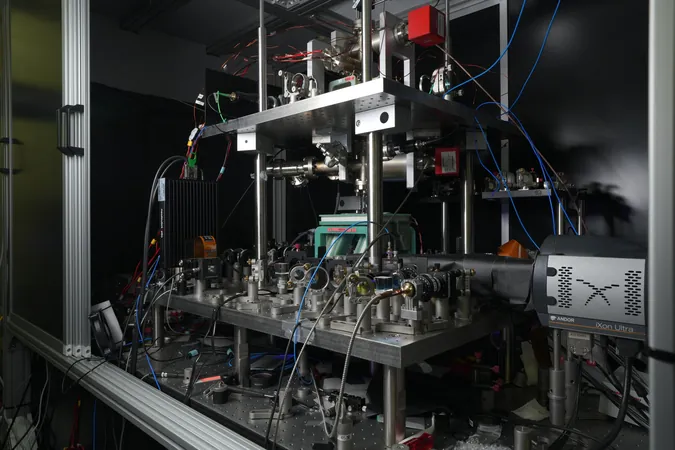
Revolutionary AI Technique Creates Flawless Atomic Arrays at Lightning Speed!
2025-08-25
Author: Emily
Unlocking Quantum Potential with AI
In a groundbreaking advancement, researchers at the University of Science and Technology of China and the Shanghai Artificial Intelligence Laboratory have unveiled an innovative AI-enhanced protocol, propelling the assembly of defect-free atomic arrays into a new era. This cutting-edge technique could revolutionize the simulation of quantum systems, essential for harnessing quantum mechanical effects.
The Power of Optical Tweezers
Traditionally, physicists have relied on optical tweezers—powerful laser beams capable of trapping and manipulating particles—to arrange atoms with precision. However, this new AI protocol enhances that ability, enabling the swift formation of atomic arrays devoid of defects.
A Breakthrough Methodology
Published in the prestigious Physical Review Letters, this innovative approach leverages computer-generated holograms projected by spatial modulators and sophisticated AI algorithms. By doing so, it allows for real-time corrections of atomic configurations while simultaneously planning the optimal positions of all trapped atoms.
From Theory to Practice: A Journey Rooted in Curiosity
Prof. Chao-Yang Lu, a leading researcher, noted that their interest in neutral atom arrays emerged from the legendary Einstein-Bohr debate. His journey toward demonstrating Einstein's thought experiment utilizing single, cooled atoms began five years ago, igniting a passion for quantum computing's aesthetic and efficient capabilities.
AI Meets Quantum Science
The study’s pivotal investigator, Dr. Han-Sen Zhong, crafted a groundbreaking AI-driven framework that orchestrates the simultaneous movement of atoms within an optical tweezer array. By employing a high-speed spatial light modulator, the team achieved real-time control, successfully assembling defect-free atomic arrays of up to 2024 atoms in just 60 milliseconds.
Scaling New Heights in Atomic Manipulation
What sets this method apart is its scalability—scientists suggest it can potentially handle arrays of 10,000 to 100,000 atoms seamlessly. This efficiency stems from the AI model analyzing randomly loaded arrays, determining the quickest routes for rearranging atoms to fill in gaps—unlike prior methods that operated sequentially.
A Leap Towards Quantum Computing
The implications of this research are immense, paving the way for the realization of complex quantum systems built on flawless atom arrays. These systems promise to facilitate reliable quantum simulations and computations. In the researchers' sights lies the ambitious aim of demonstrating quantum error correction and fault-tolerant quantum computing, driven by atomic qubits.
A New Dawn for Quantum Technology!
As AI continues to intersect with quantum physics, the future looks bright for the development of advanced quantum technologies. The strides made in creating defect-free atomic arrays might just be the key to unlocking a new realm of computational possibilities.









 Brasil (PT)
Brasil (PT)
 Canada (EN)
Canada (EN)
 Chile (ES)
Chile (ES)
 Česko (CS)
Česko (CS)
 대한민국 (KO)
대한민국 (KO)
 España (ES)
España (ES)
 France (FR)
France (FR)
 Hong Kong (EN)
Hong Kong (EN)
 Italia (IT)
Italia (IT)
 日本 (JA)
日本 (JA)
 Magyarország (HU)
Magyarország (HU)
 Norge (NO)
Norge (NO)
 Polska (PL)
Polska (PL)
 Schweiz (DE)
Schweiz (DE)
 Singapore (EN)
Singapore (EN)
 Sverige (SV)
Sverige (SV)
 Suomi (FI)
Suomi (FI)
 Türkiye (TR)
Türkiye (TR)
 الإمارات العربية المتحدة (AR)
الإمارات العربية المتحدة (AR)